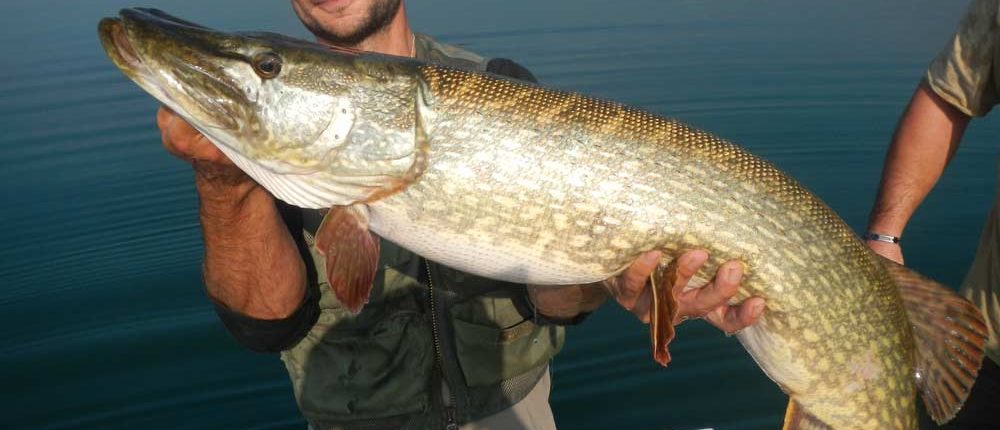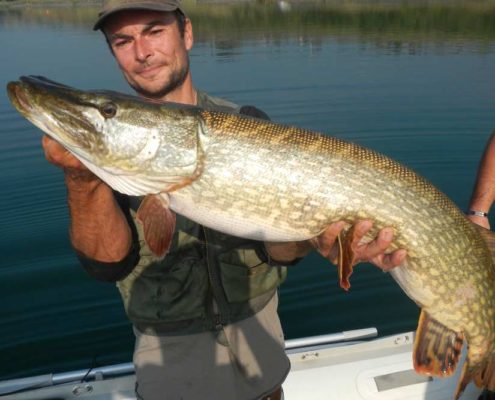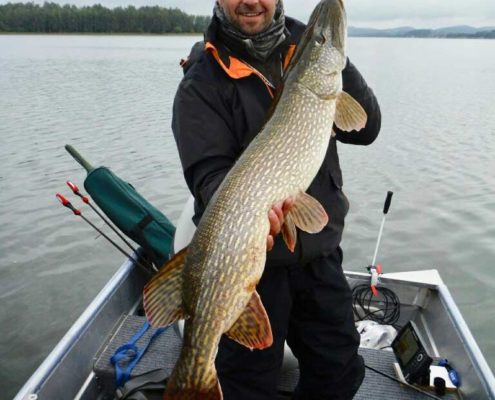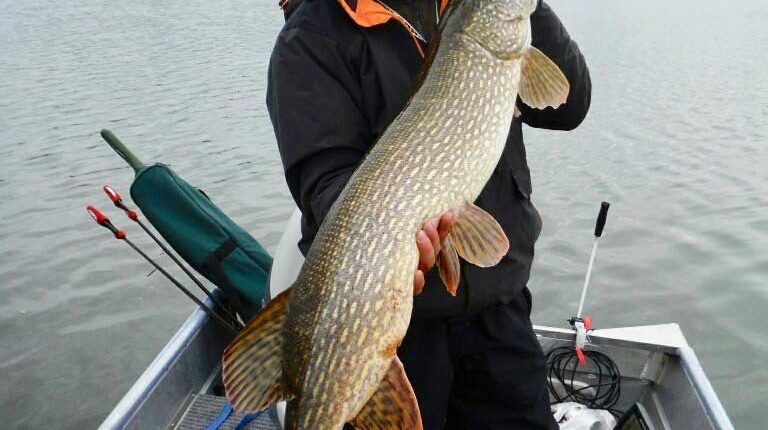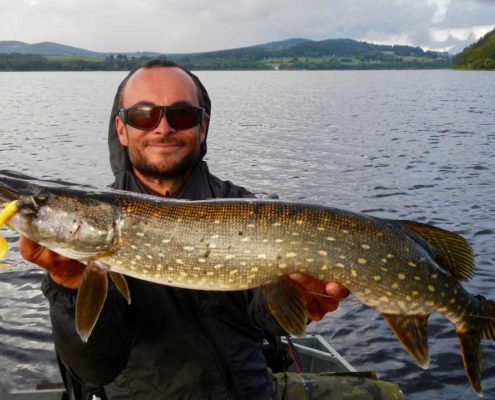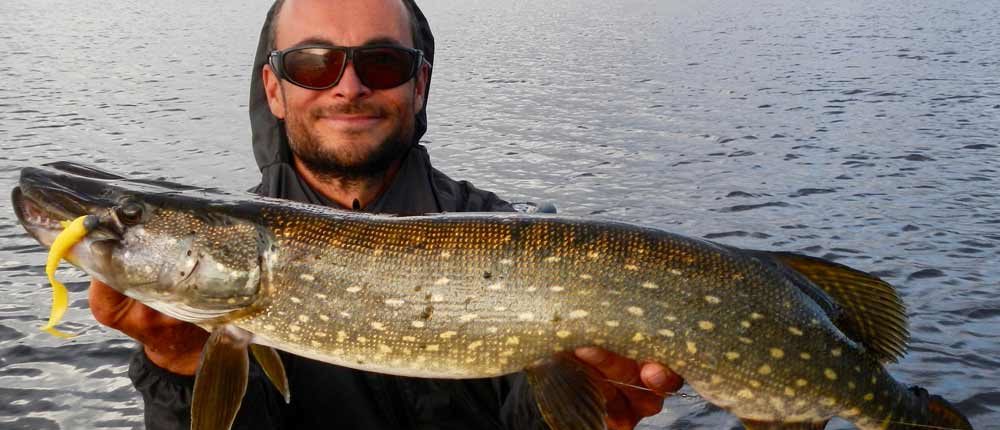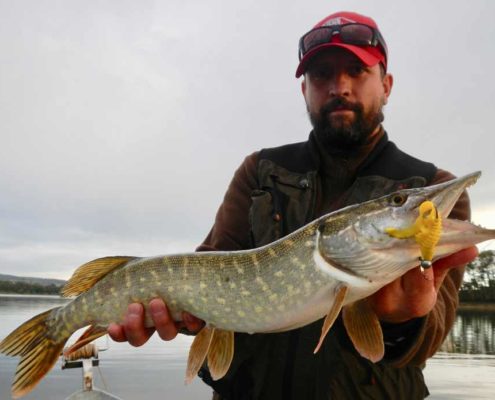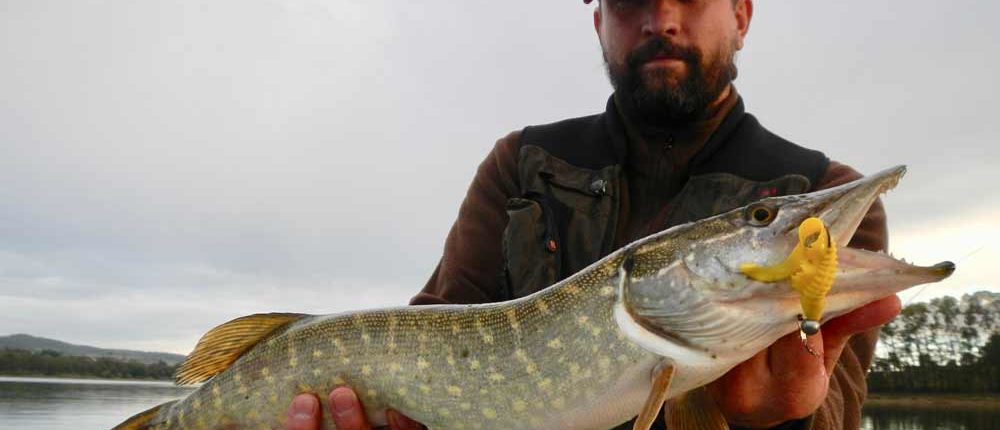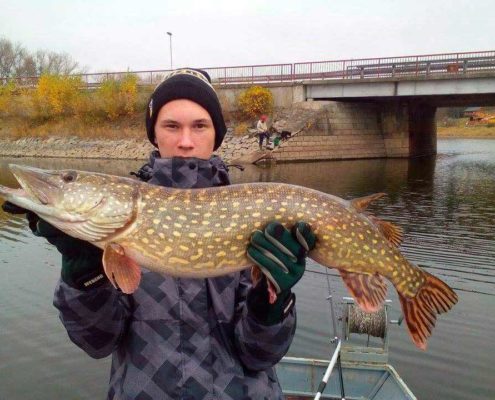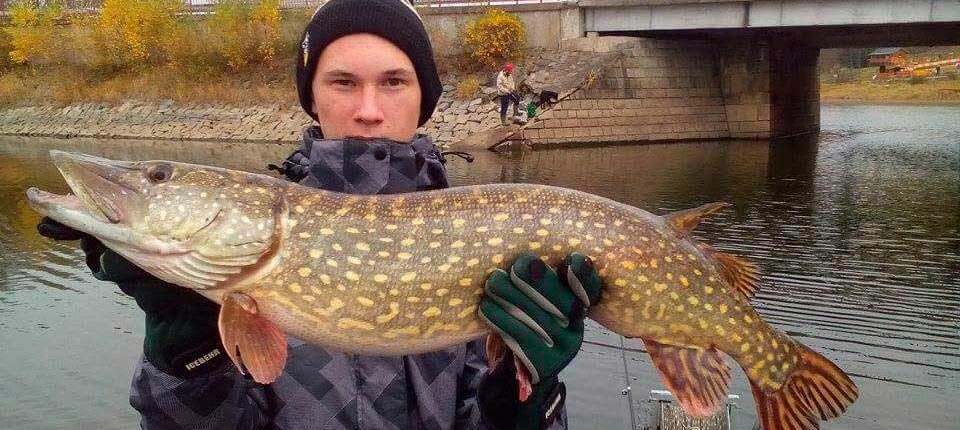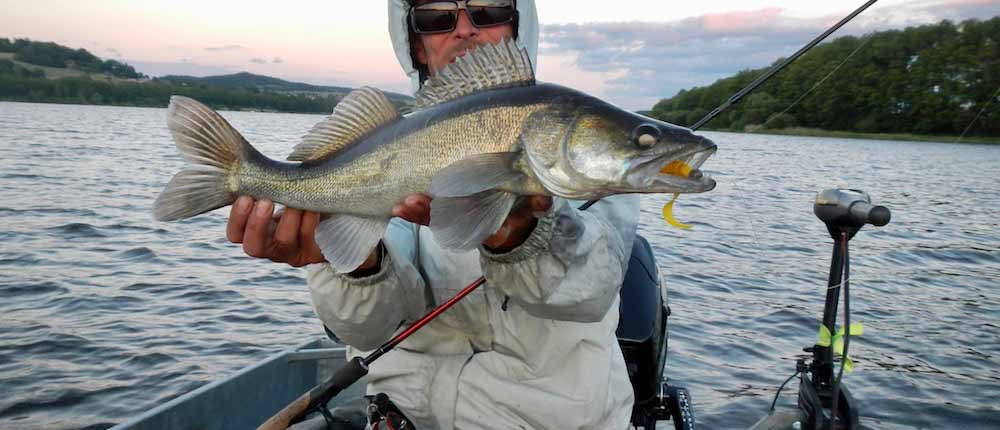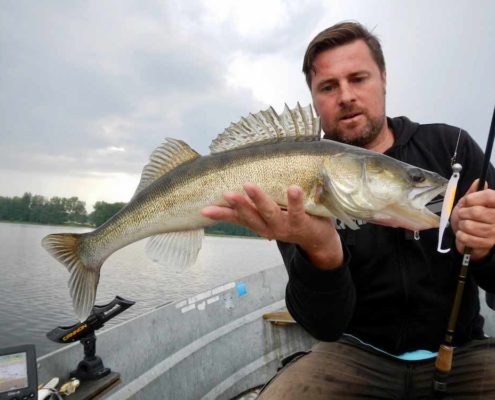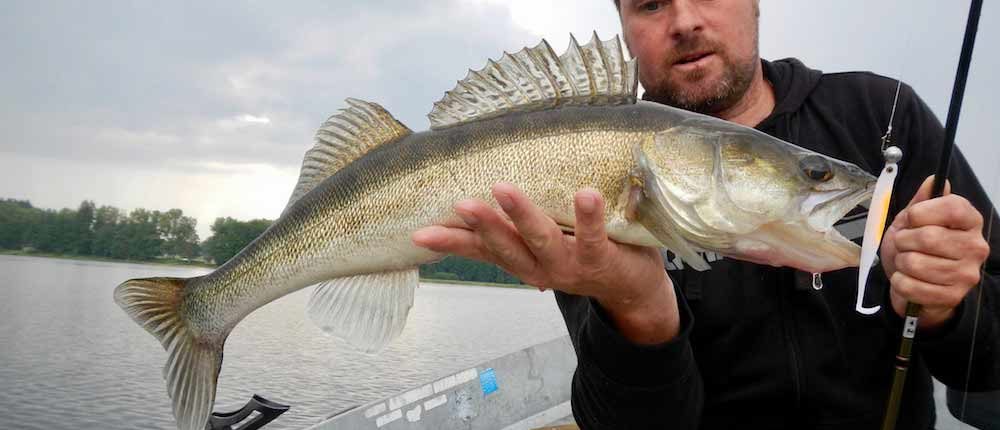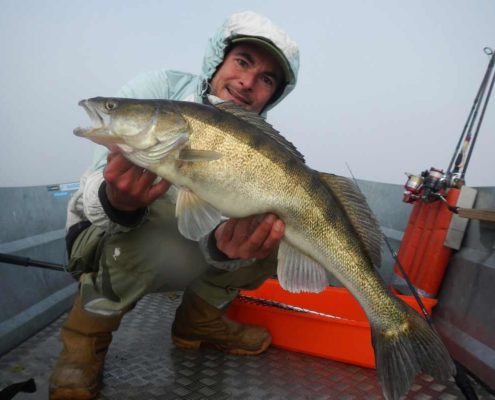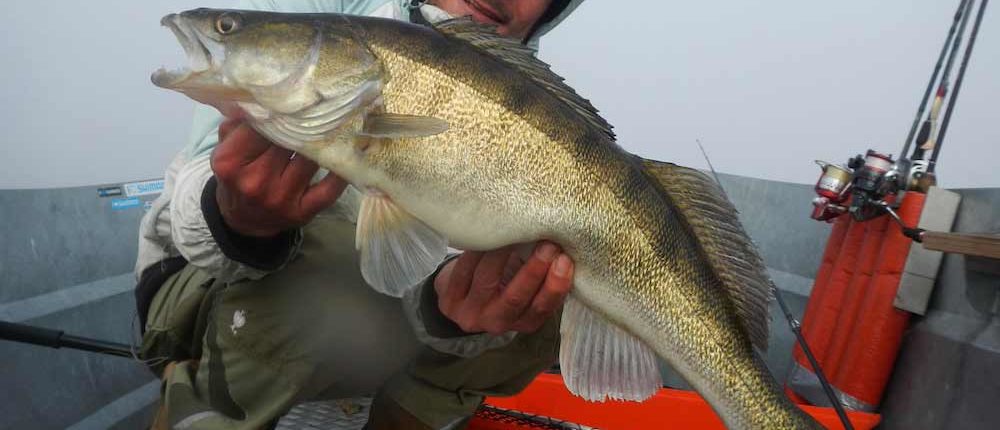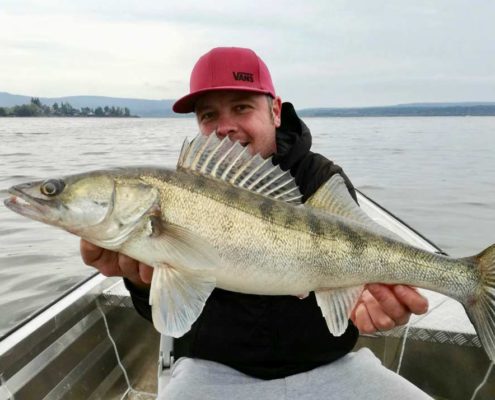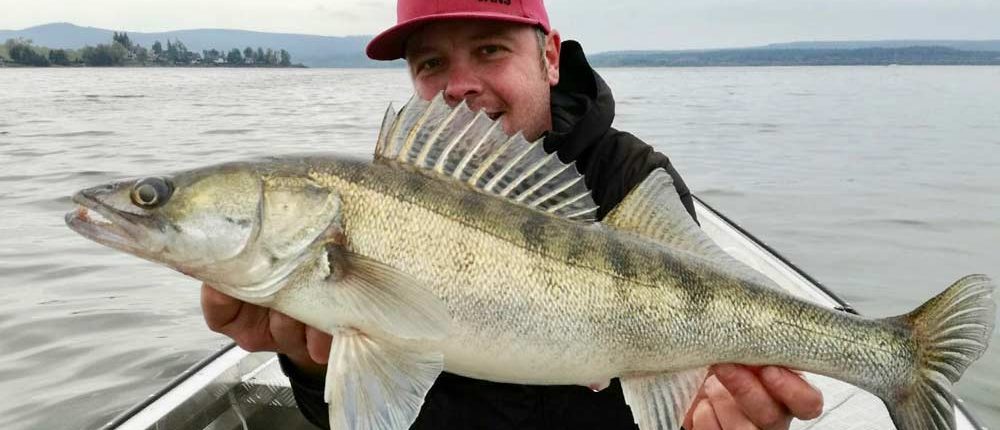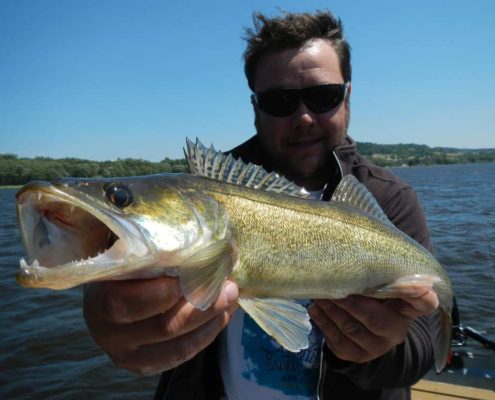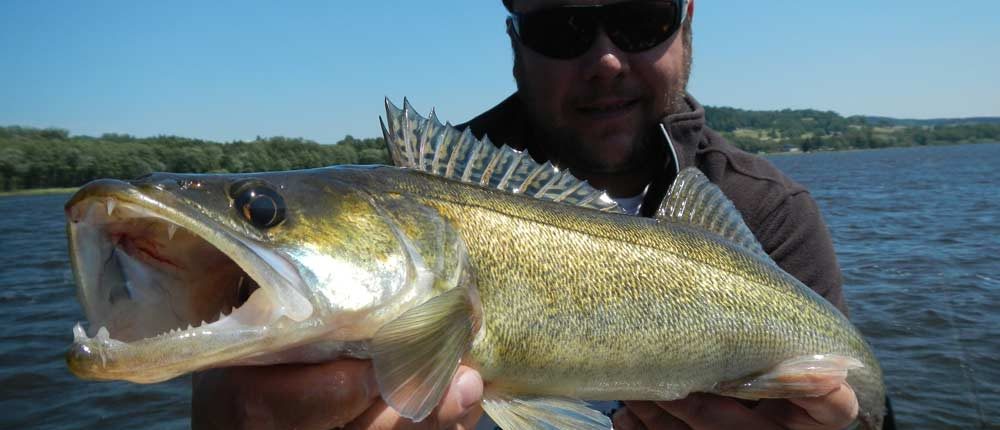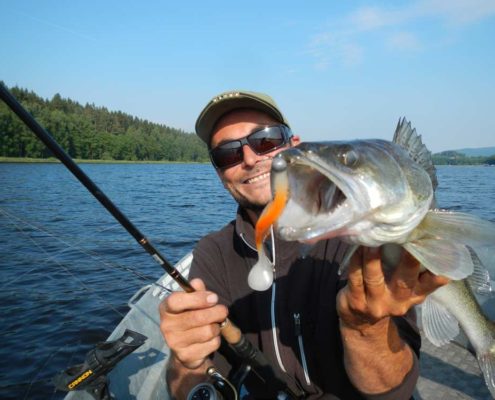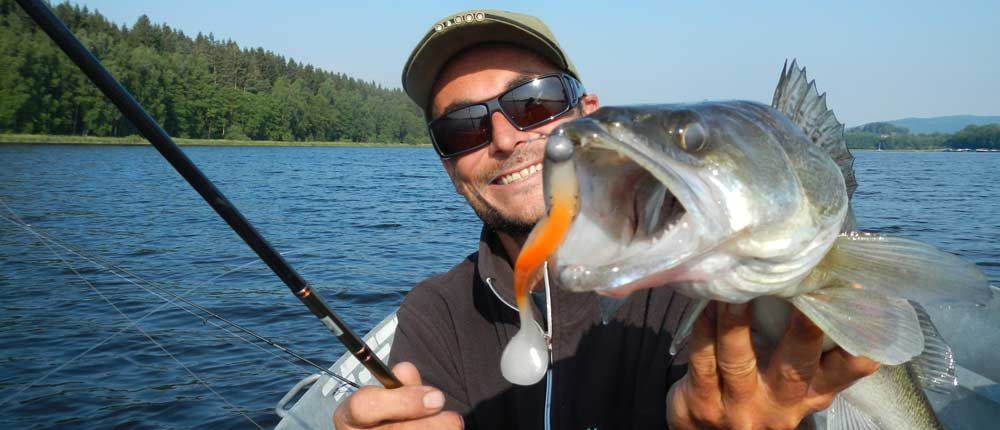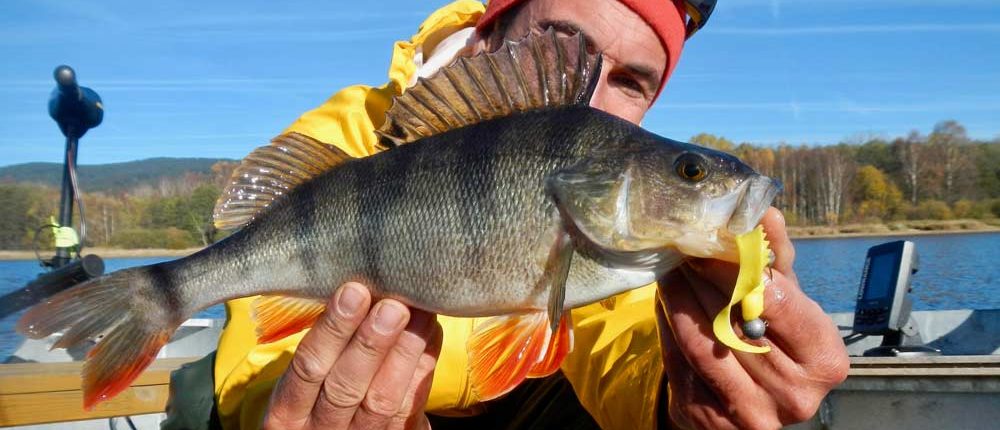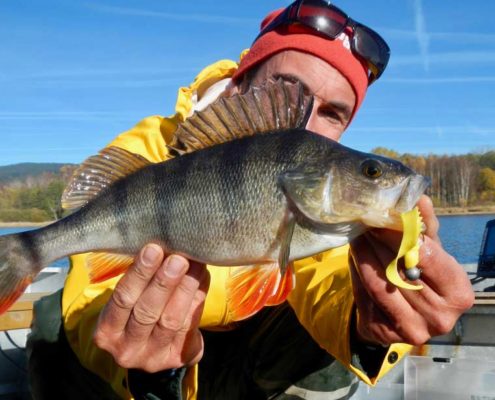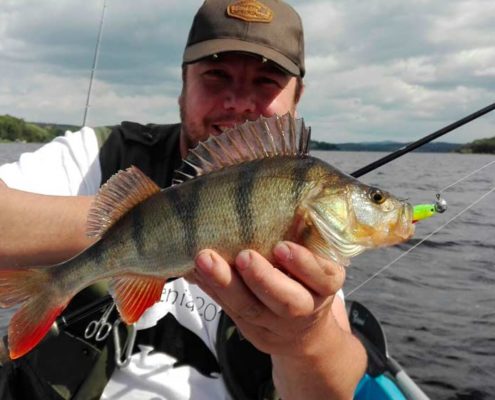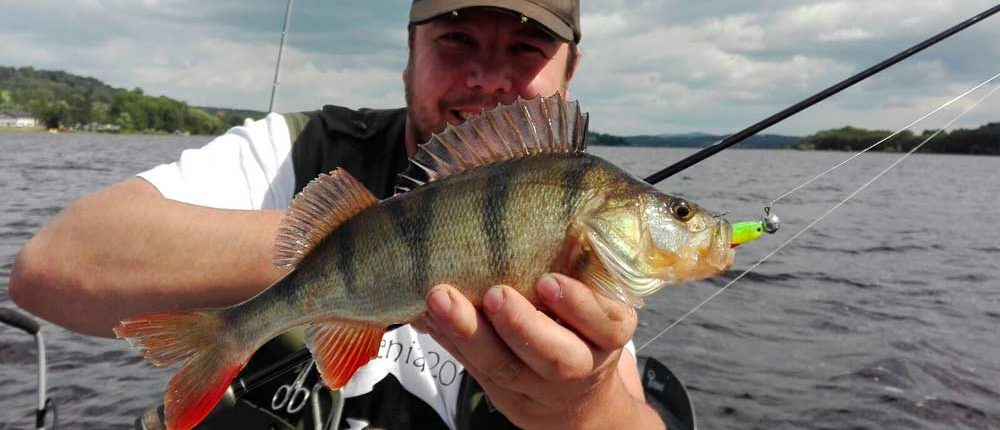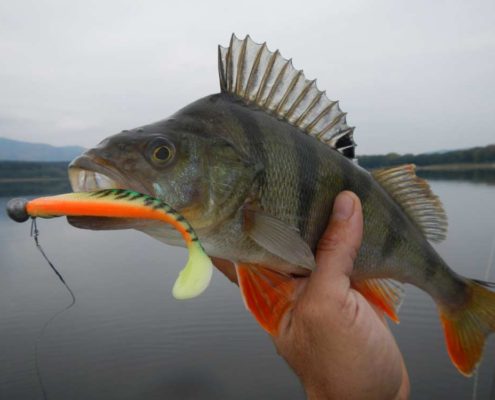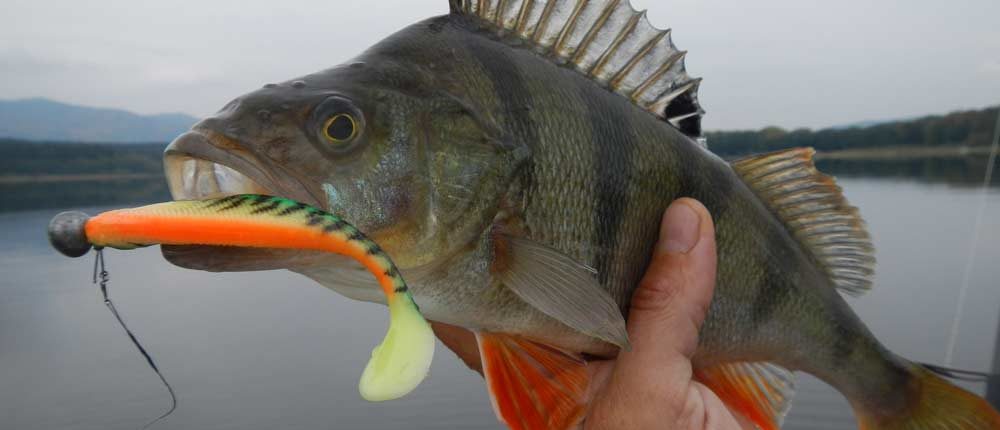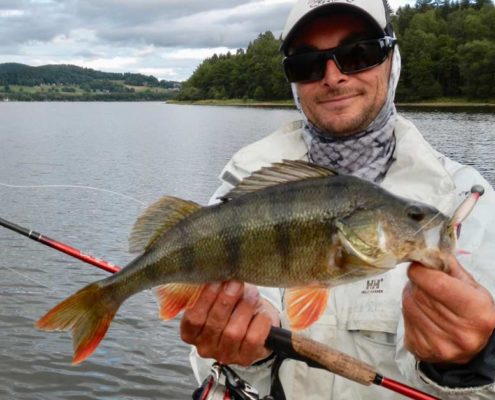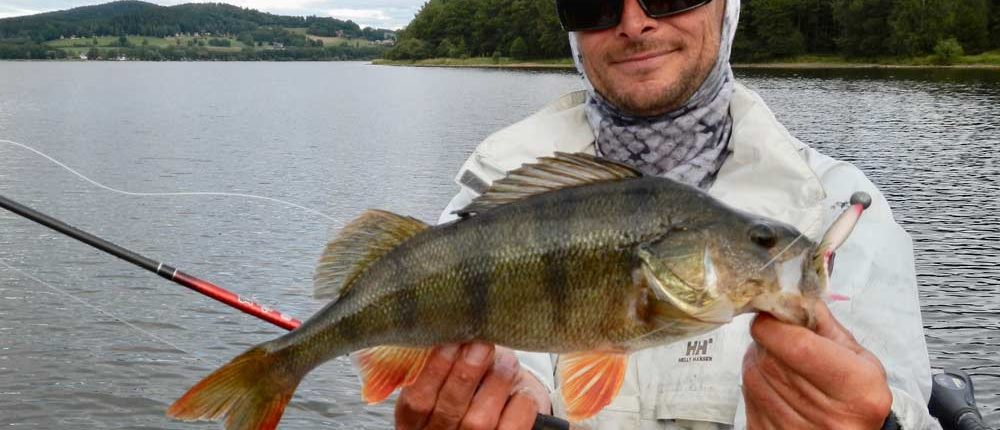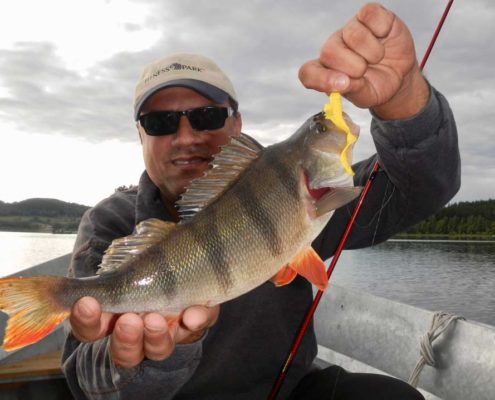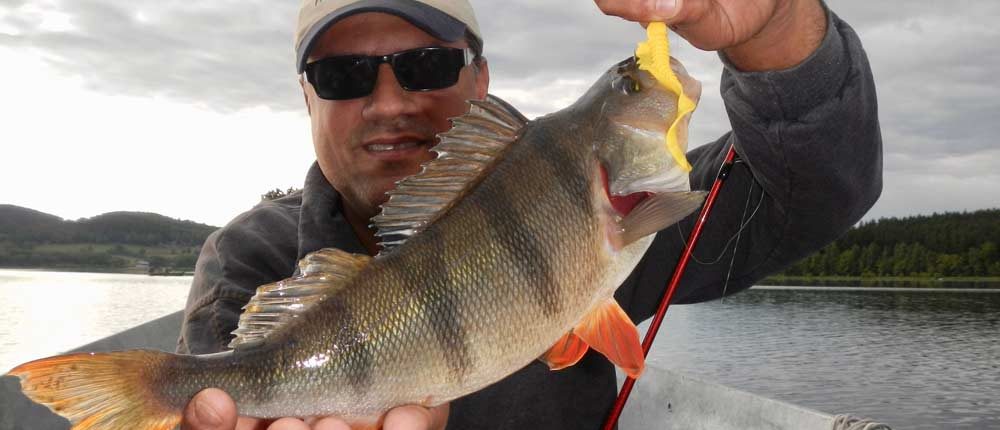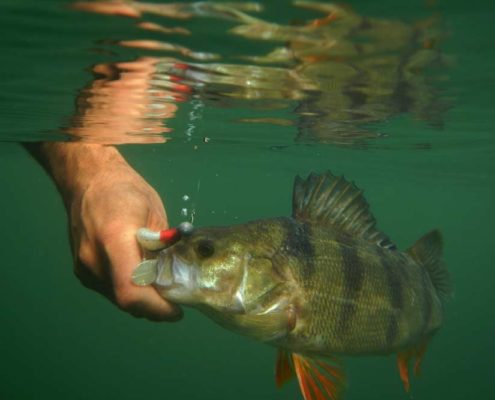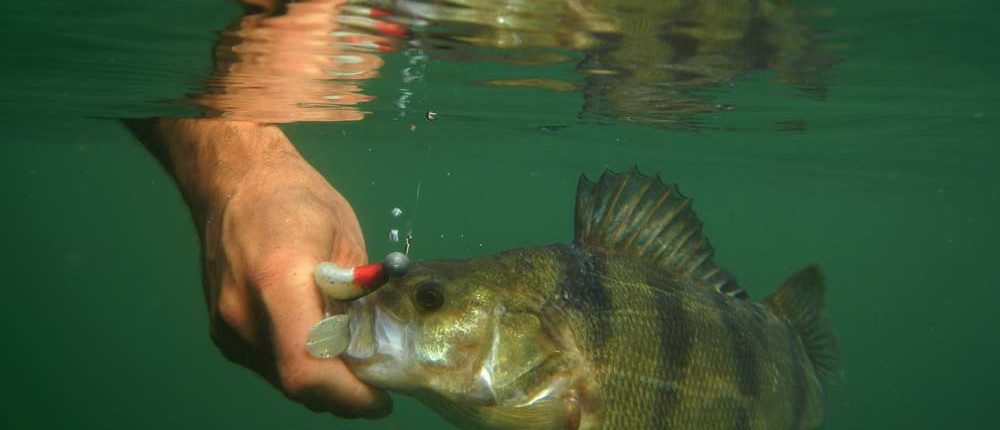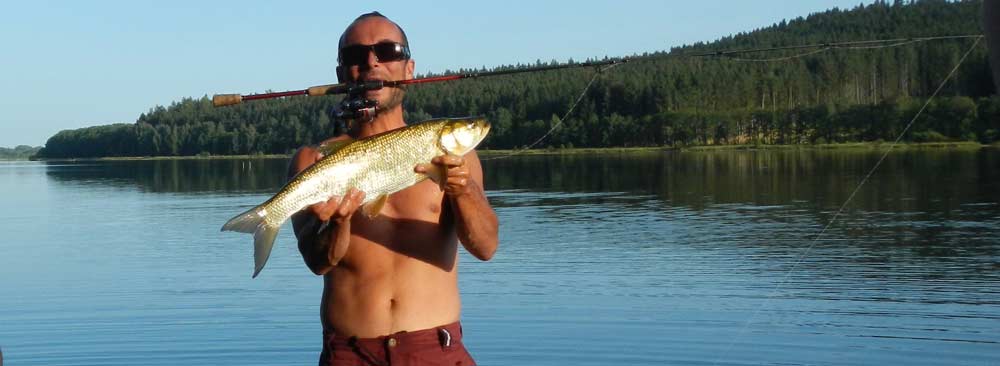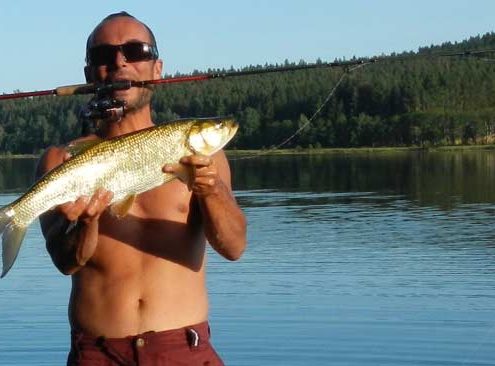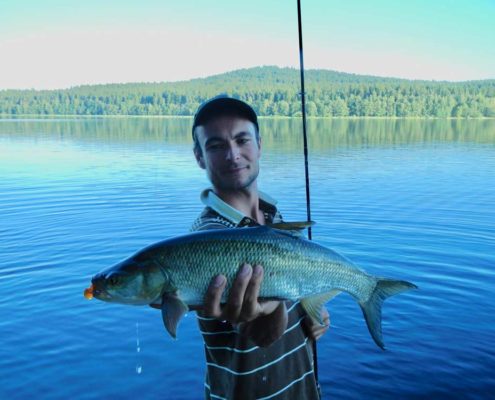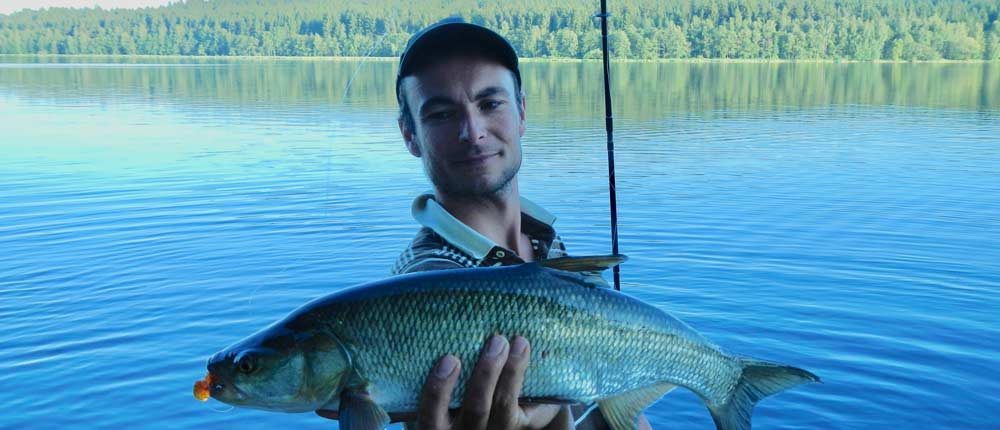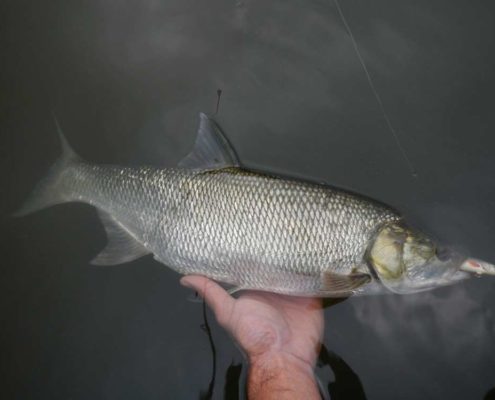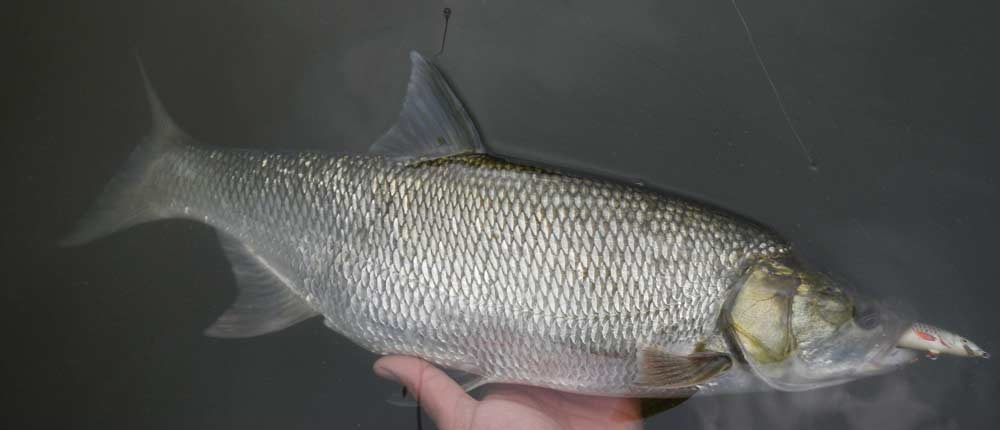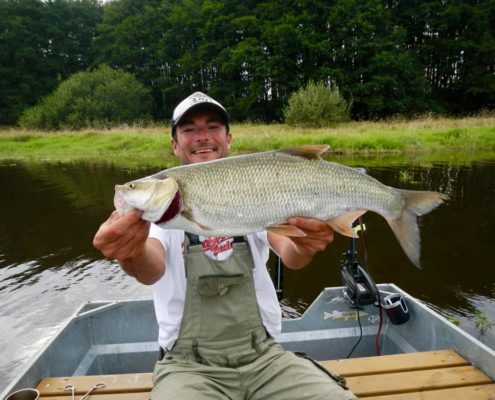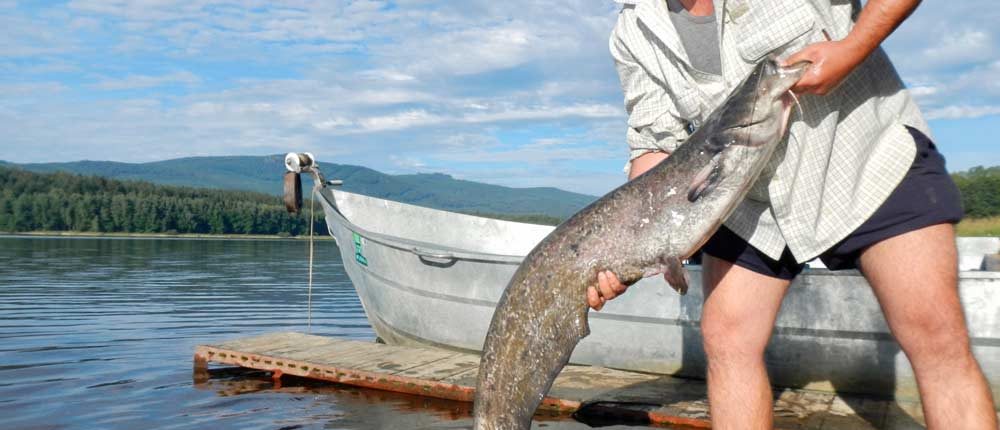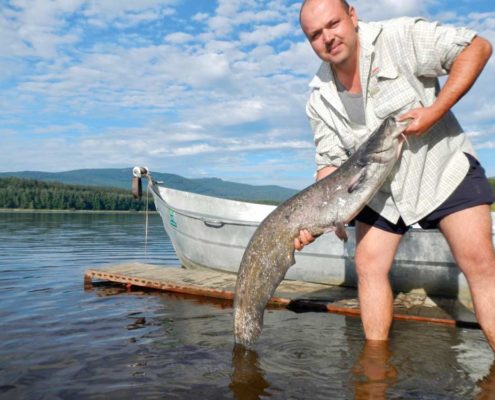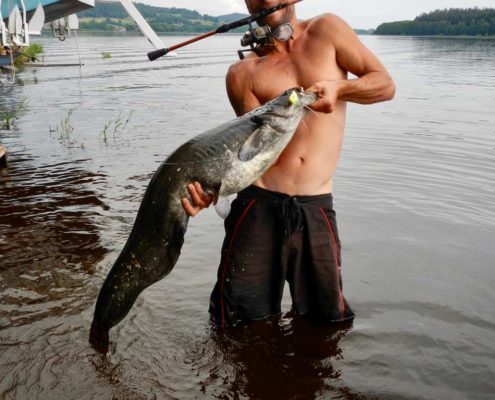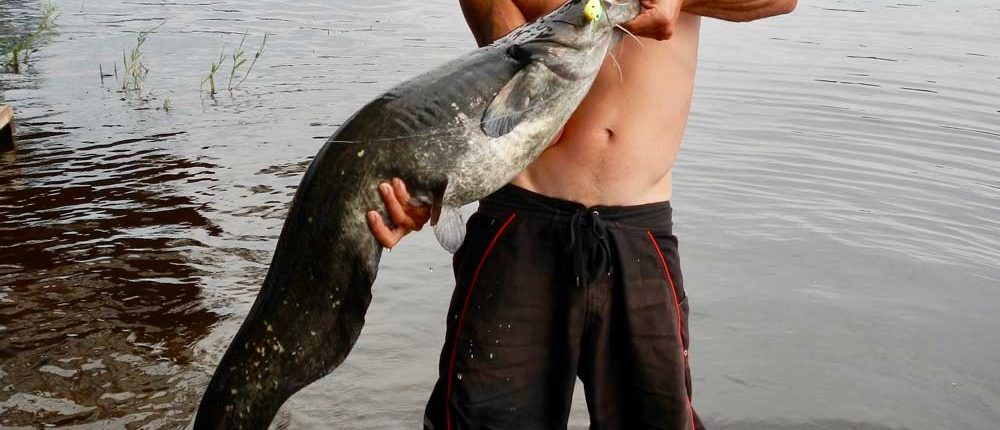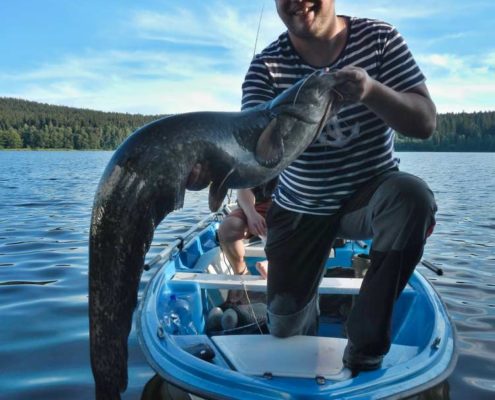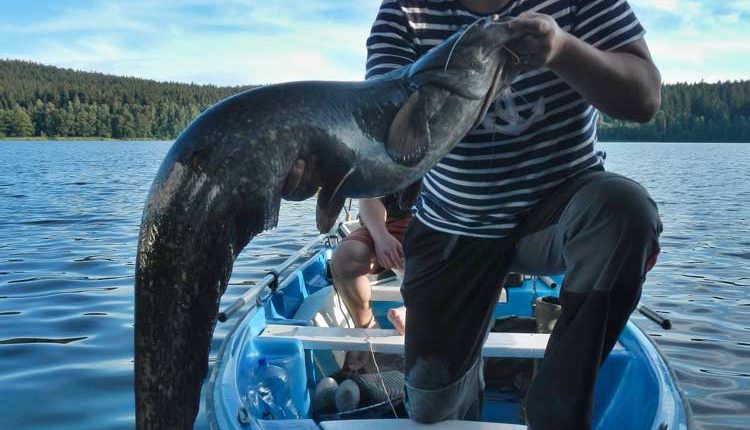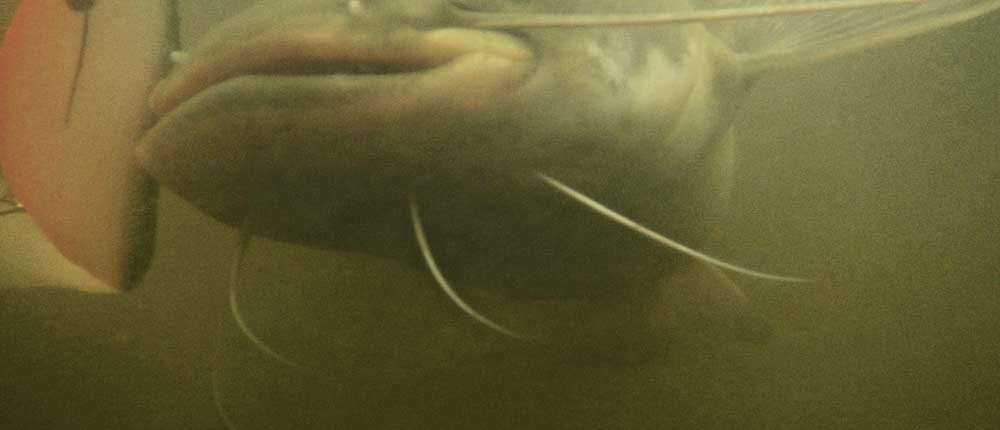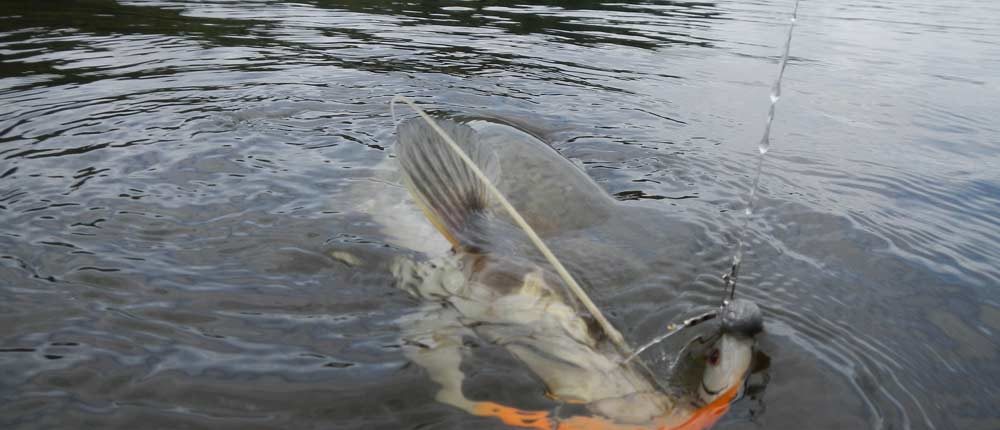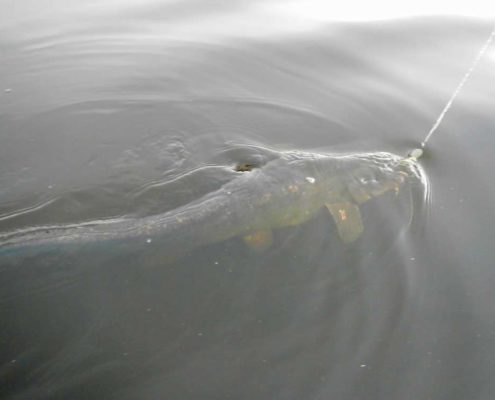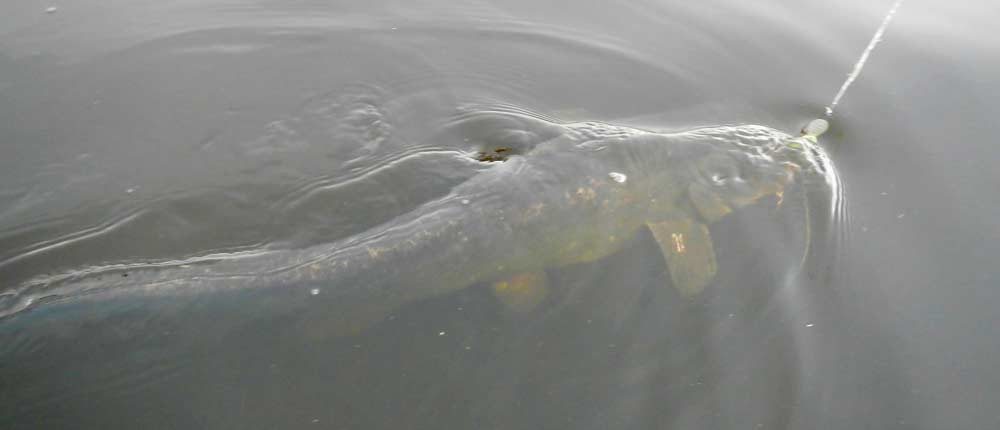Target Fish
PIKE (Esox lucius)
The 4,870 hectares of the Lipno lake are a fisherman’s paradise. It has not been entirely empty since the 1950s, and its fish grow to enormous sizes. A world record catch of 25.40 kg has been proven here. Metre-long specimens are no rarity here, and each year we manage to catch several of them using artificial lures. Since the majority of decent fishermen throw large pike back, there is certainly something to look forward to in the future. Catching a prize predator is never easy. It requires certain skills, knowledge of the water and a stroke of luck. It is much simpler to outsmart smaller, less experienced specimens measuring around 70 cm. A sizeable number of these fish are found in the lake, and they are among the most frequently sought after fish for spin and plug fishing in Lipno.
The best colour of pike bait is undoubtedly firetiger, both for wobblers and for rubber imitations. Surface lures also work well in the early morning.
ZANDER (Sander lucioperca)
Without a doubt, the Zander is one of Lipno’s iconic fish. Its mountain lake character provides this species with good conditions for both life and reproduction. Its kick into bait through a braided fishing line is exciting and highly addictive. While fishing, we use a wide spectrum of modern reels and lures, which we combine according to the specific water conditions. These include traditional jigging, drop shot, speed jigging with a drift sock, vertical spinning lures, and deep diving and neutrally buoyant wobblers. The key to success is finding the fish and finding out which method begins to work on a given day and in a given place. Staying anchored in one spot for too long does not pay off. After 15-20 minutes without contact, we move on to a new fishing ground. Zander in the reservoir migrate constantly and may only stay in one place for an hour, or in exceptional cases for a few days. Patience and constant testing are required. With time, experience will begin to bring you more regular catches. It is possible to catch a reasonable volume of fish measuring 50 to 70 cm. Last year, our record for one boat was 28 zander in a single afternoon (plus two pike and one perch). All the fish were carefully thrown back. The following day, the weather cooled down rapidly and the zander did not take the bait once.
VFor large zander to attack, it takes large bait and time. Do not be afraid to use 20-cm rubber lures and a genuinely slow reel. The only bite of the day may mean a mammoth Lipno catch of over 90 cm. Large fish, however, are rare and must be protected!
EUROPEAN PERCH – lake-dwelling (Perca fluviatilis)
Large, beautiful perch are a Lipno speciality. Two lake-dwelling forms of the common perch are found here. The smallest, living along the shore, is a deep-water form, characterised by a specialisation in larger prey, its tall physique and rapid growth in both weight and length. On a good day, we catch magnificent perch of up to 40 cm in length. This is a magical boundary. Larger fish are old and very careful. They have seen plenty of lures in their time and won’t take the bait so easily. Sometimes, when catching a large perch, we spot a trailing fish 10 cm longer than the one on the rod. Years ago, after a successful battle, a friend once measured such a fish at an unbelievable 56 cm, and we both believe that it is still swimming out there today. The most splendid way of catching perch is early-morning “popping”. If we find a large shoal to fish near the surface, the game is won. At the beginning of the season, early-morning bites are very aggressive and full of adrenaline. Most of the time, however, the fish quickly vanish. After that, we search for them in deeper waters using traditional rubber lures and wobblers.
Rubber crayfish with real colours on a heavy stand-up head, combined with an aggressive line on the bottom, work surprisingly well. Good-quality yellow and brown twisters are an immortal classic.
ASP (Leuciscus aspius)
It is a warm August morning, I am anchored at the edge of the lake bed and the zander are not taking the bait. A few hundred metres from my boat, the calm surface is broken by the attacks of about five asps. I decide to take action and, using the electric motor, I sail into the midst of the hunting fish. They have surrounded a shoal of common bleak, and every ten seconds, one of them attacks. I place a slim heavy wobbler on my line. I throw it in front of the hunting fish and very quickly pull up the bait so it is just under the surface. In a flash, a fish changes direction and just a second later, a brutal bite comes in at full speed! I instantly forgot about zander and spent the rest of the day enjoying around ten adrenaline-fuelled bites from the surface, which I converted into five catches.
Lipno asp are amazing indigenous fish with a fascinating and effective method of hunting. Trying to outsmart them is always great fun, preferably with a fly-fishing rod.
WELS CATFISH (Silurus glanis)
Lipno catfish can measure more than two metres long. Fish of up to 140 cm, which you will not catch with light spin or plug fishing, can be slowly conquered and brought aboard your boat. Bites from smaller catfish can be a pleasant change from catching other species of fish. If you intend to catch these heavyweights, you will need adequate tackle and will have to go fishing when they will genuinely take the bait and not just when you have time. Good conditions in Lipno come around during short summer storms which are accompanied by changes in atmospheric pressure. Under these circumstances, we recommend loud buoyant wobblers, presented above flooded stumps. You can also try to entice catfish with a lure of a ball of earthworms.
I consider fishing for catfish using live fish as bait to be a modern fishing concept and, in my experience, inhumane and needless. It is possible to use dead fish or very effective earthworms. The greatest sporting challenge is most certainly catching catfish over two metres long with artificial bait.

